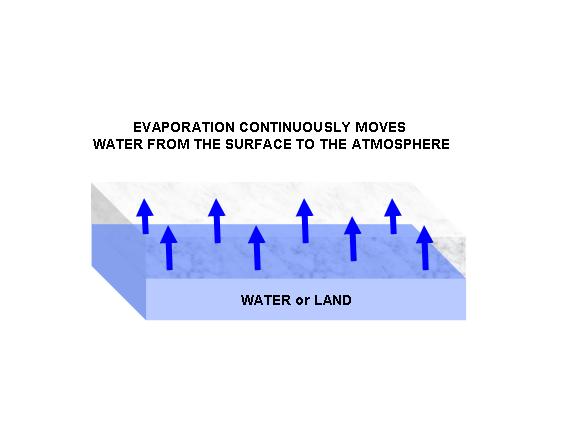Water vapor is water in its gaseous state-instead of liquid or solid (ice).
Water vapor is totally invisible. If you see a cloud, fog, or mist, these are all liquid water,
not water vapor.
Water vapor is extremely important to the weather and climate. Without
it, there would be no clouds or rain or snow, since all of these require water vapor in order to form.
All of the water vapor that evaporates from the surface of the Earth eventually returns as
precipitation - rain or snow.
Water vapor is also the Earth's most important greenhouse gas,
accounting for about 90% of the Earth's natural greenhouse effect, which helps keep the Earth warm
enough to support life.
When liquid water is evaporated to form water vapor, heat is absorbed. This helps
to cool the surface of the Earth. This "latent heat of condensation" is released again when the water
vapor condenses to form cloud water. This source of heat helps drive the updrafts in clouds and
precipitation systems, which then causes even more water vapor to condense into cloud, and more cloud water and ice to form precipitation.
|



